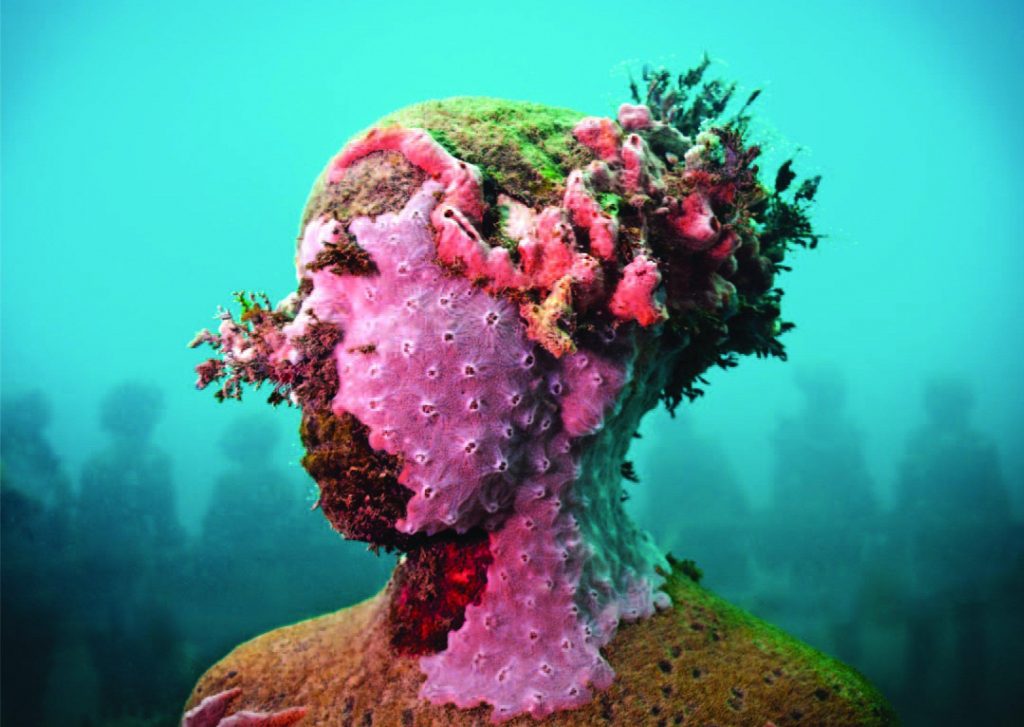Research
I started by looking into real-world examples of artificial reefs. Some projects completely fascinated me. One successful case I found was in Pulau Weh, Indonesia. Researchers placed hundreds of concrete and plastic modules underwater, and over just three years, fish abundance and species diversity dramatically increased. Honestly, I felt really encouraged—like maybe human intervention really can help undo some of the damage we’ve caused to nature. But then, of course, things got more complicated.
I stumbled upon the disastrous story of the Osborne Reef in Florida. In the 1970s, about two million tyres were dumped offshore, intended to serve as reefs. Instead, storms moved the tyres around, severely damaging the existing natural coral ecosystems. It shocked me to read that, after decades, they’re still struggling to clean up the mess. It made me realise just how delicate this balance between human technology and natural ecosystems really is—and how important careful planning and ethical considerations are.
Then came the inspiring art projects. I found myself completely absorbed by the works of Jason deCaires Taylor. His sculptures are breathtaking—artfully crafted figures submerged underwater, slowly becoming colonised by marine life. It wasn’t just about aesthetics; it was about creating something genuinely beneficial to the environment, helping restore ecosystems and diverting tourists away from fragile natural reefs. I loved the idea of “ecological fitting,” where nature gradually integrates and transforms the sculptures, turning them into something genuinely alive.
Refik Anadol’s projects were completely different but equally mind-blowing. Instead of physical sculptures, he uses massive datasets and AI to generate abstract digital reefs—capturing both the beauty and fragility of coral ecosystems. His work felt both poetic and scientific, and it gave me a lot of ideas about how I could represent coral data visually in my own installation.
This research phase has given me a clearer sense of direction. I’m starting to understand the complexity of artificial reefs—both their potential and their pitfalls. It’s fascinating but also a little daunting. One big question I keep thinking about is whether technology can ever truly replace what nature has built, or if we’re sometimes just fooling ourselves into thinking we can easily repair the damage we’ve caused.
Jason deCaires Taylor:
Film – Underwater Sculpture by Jason deCaires Taylor
Refik Anadol:
https://verse.works/artworks/c82e82f4-c14d-43e2-9457-b7dc5f80036e/75000017
Miami Sculpture Park:
FY25Q1 CC FY25Q1 AX uk en Earl of East PRO 15sInstreamSkip Google Ads VID 16×9 NA NA
https://www.scubadiving.com/are-artificial-reef-exhibits-new-era-scuba-diving-underwater-art-museums
Paper: The Underwater: Using Art to Engage Communities Around Climate Action
Choosing artificial reefs over natural reefs for diving:
https://www.sciencedirect.com/science/article/pii/S0048969723041116
Socio-economic considerations:
Artificial reeds design (material):
Artificial reef design: void space, complexity, and attractants
artificial_reef_a_review-libre.pdf (note it was written in 1985)
**MBARA_Guidelines_for_Marine_Artificial_Reef_Materials_January_2004_March6_2023.pdf
Design and Construction of Artificial Reefs in Malaysia: Ingenta Connect
Other methods to restore reefs compared to artificial reefs:
abelson-2006-reef-restoration.pdf
Effectiveness:
Aquatic Conservation: Marine and Freshwater Ecosystems | Aquatic Journal | Wiley Online Library
Problems: can’t find underwater live web cam of artificial reefs, can’t find datasets on failed artificial reefs
Rethinking Artificial Reef Structures through 3D Clay Printing | ArchDaily
Reeflection
This week really broadened my understanding of artificial reefs—both practically and creatively. Researching various projects and artists made me see the topic not just as an ecological solution, but as an emotional and artistic statement. The works by Jason deCaires Taylor especially resonated, inspiring me to think about how my own project could bridge art, science, and public engagement.

Leave a Reply